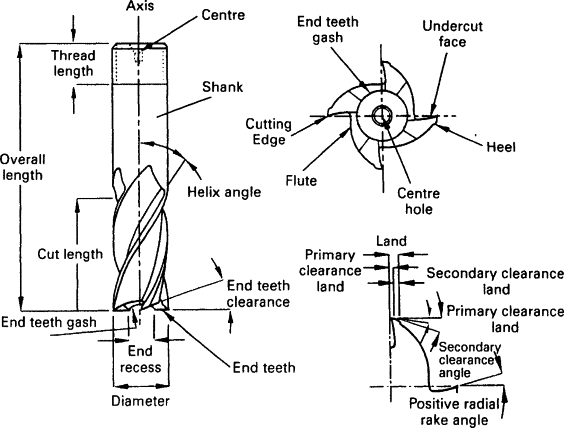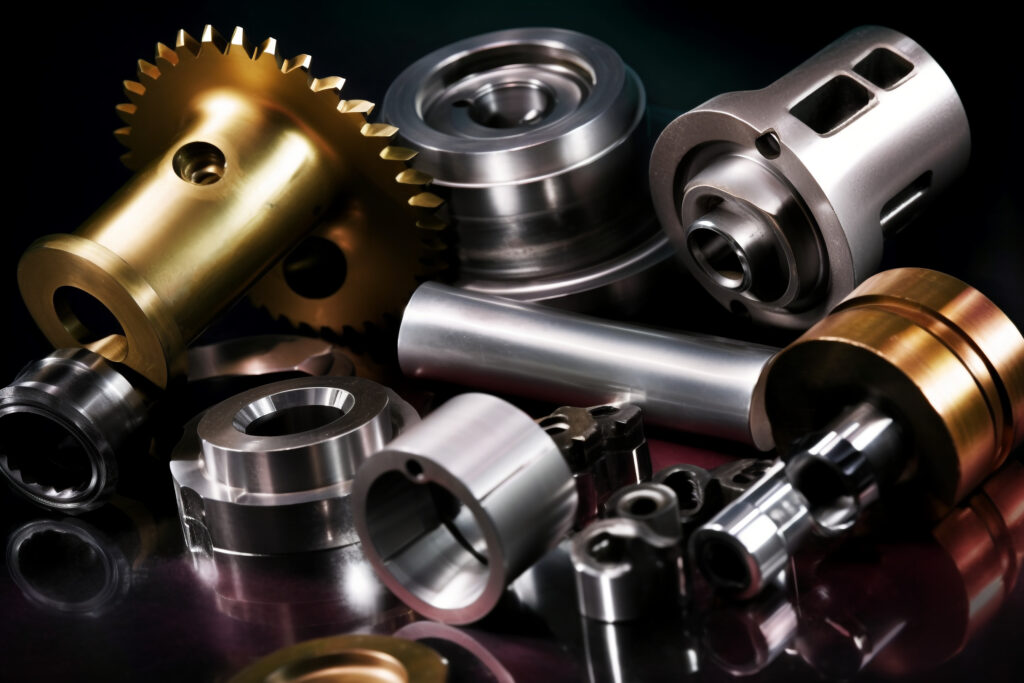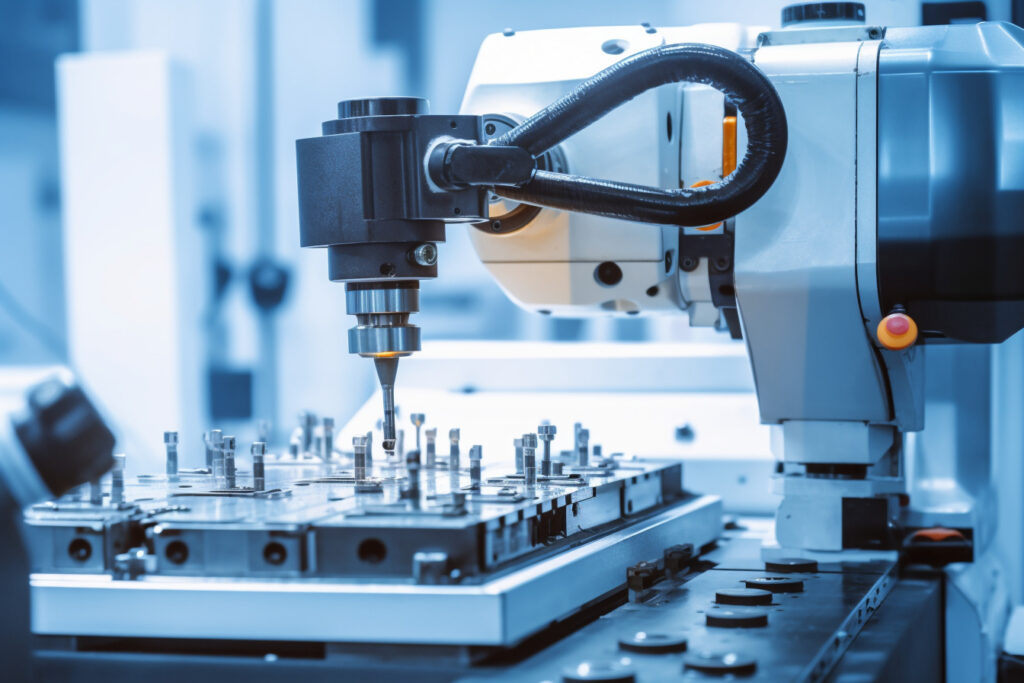Carbide end mills play an irreplaceable role in the precision arena of contemporary manufacturing. They are not only the heart of modern machine tools, but also the key to efficient and precise machining. In this article, we’ll take a closer look at the importance of carbide end mills and how they are shaping and driving innovation across the manufacturing industry.
What Are End Mills For?
An end mill is a common cutting tool used primarily for machining metals and removing other materials. Its design is characterized by a cylindrical cutter body with cutting edges distributed around the circumference of the cutter body, called the main cutting edge. However, the end face of the cutter body may also have a cutting edge, called the minor cutting edge. End mills are mainly used for plane milling, flute milling, step face milling, copy milling and so on.
Types of Carbide End Mills
End mills, as common and versatile cutting tools, can be categorized into various types based on different designs, structures and uses.
By Material
HSS end mills: low cutting speed, suitable for machining general materials.
Carbide end mills: high hardness and wear resistance, high cutting speed, suitable for machining difficult materials.
Ceramic end mills: suitable for dry cutting of hard materials, such as cast iron and hardened steel.
By Structure
Integral end mills: tool and shank are one piece with good rigidity, suitable for precision machining.
Welded end mills: inserts and shanks are connected by welding, suitable for mass production.
By Application
Cylindrical end mills: helical cutter teeth with good cutting effect. Mainly used for plane milling, slot milling and side milling, suitable for milling processing of various materials.
Ball end mills: the front end is spherical, capable of multi-directional cutting and high surface finish. Suitable for processing complex surfaces, cavities and 3D contours, such as mold making and engraving.
Round nose end mills: have a spherical tip and a cylinder, which can reduce the stress concentration of the tool and extend tool life. Ideal for machining parts requiring chamfers and fillets, and for the transition from roughing to semi-finishing.
Keyway end mills: specialized tooth design can accurately machine standard keyways, dedicated to machining keyways and key inserts.
Face mills: larger diameters with multiple replaceable inserts for efficient machining, typically used for milling large flat surfaces.
…
Besides, end mills can also be categorized according to the number of flutes. The number of flutes has different effects on the cutting performance, surface finish and machining efficiency of the tool. For example, an increase in the number of flutes usually improves the surface finish and tool life, but may affect the chip removal effect and cutting efficiency.
Benefits of Carbide End Mills in Machining Different Materials
End mills show a variety of strengths when machining different materials, here we list some common materials for your reference:
| Materials | Merits |
| Steels | High strength and wear resistance: can effectively cope with the high strength and hardness of the steel, which ensures that it is not easy to wear out in long time machining.
High-temperature stability: good cutting performance can be maintained under the high temperature generated during machining, which will not easily lead to tool degradation and failure. |
| Stainless steels | Anti-adhesion: high hardness and special coating can reduce the adhesion of stainless steel in the machining process and keep the tool sharp.
High corrosion resistance: reduce the impact of corrosive substances generated by stainless steel on the tool during machining, extending tool life. |
| Cast iron | Excellent wear resistance: the hard particles contained in cast iron are more abrasive to the tools, and the carbide end mills can effectively fight against such abrasion.
Reduced thermal deformation: carbide material has a low coefficient of thermal expansion, which can reduce tool deformation in high-temperature machining and improve machining accuracy. |
Factors To Consider When Selecting Carbide End Mills
When choosing a carbide end mill, a number of factors need to be considered to ensure that its performance and service life can be maximized.
Workpiece Material: Different materials place different demands on the tool, and the hardness of the material affects tool wear and cutting efficiency.
Tool Coating: Coatings can improve the wear, oxidation and heat resistance of the tool. Choosing the right coating according to the material and machining conditions can extend tool life and improve machining efficiency.
Number of Cutting Edges: The number of cutting edges affects the cutting speed and surface quality. Multi-flute tools are suitable for high-efficiency machining, while few-flute tools are suitable for low-speed and high-precision machining.
Tool Type: Integral tools are suitable for continuous machining, while interchangeable inserts can be replaced when the inserts are worn out, which reduces the cost of using the tool.
Brand and Support: Choosing a reputable manufacturer who offers technical support and service, such as Xingzhou, can guarantee the quality of the tool and after-sales service.
Application of Carbide End Mills in Industries
Carbide end mills have a wide range of applications in several industries, including but not limited to the following:
Automobile Manufacturing
- Engine components
- Gearboxes and transmission systems
- Body and chassis construction
Aerospace
- Aircraft engine components and structural parts.
Mold Manufacturing
- Complex surfaces and cavities
Electronics and Semiconductors
- Microfabricated electronic parts
- Semiconductor parts
…
Conclusion
Carbide end mills are widely used in several industries for their excellent performance. The high hardness, wear resistance and high-temperature stability make them ideal for machining a wide range of materials. Choosing the right carbide end mill can significantly improve productivity, machining accuracy and product quality, as well as reduce production costs. Carbide end mills can not only meet the needs of efficient, high-quality machining, but also cope with a variety of complex and precise machining tasks.
To summarize, carbide end mills are indispensable in the modern manufacturing industry. With the continuous progress of technology and process improvement, carbide end mills will continue to play an important role in various fields, helping the manufacturing industry to realize the goal of more efficient and more precise machining.
FAQs
1. What is the most commonly used end mill?
The most commonly used end mill is the square end mill. This type of end mill is versatile and can be used for various milling operations, including slotting, profiling, and plunging. It has a flat end that produces a sharp, 90-degree corner on the workpiece, making it ideal for creating flat-bottomed pockets and slots. Square end mills are commonly used in general-purpose machining of a wide range of materials, including metals, plastics, and wood.
2. What is the best end mill for cutting steel?
The best end mill for cutting steel is a carbide end mill with a TiAlN or AlTiN coating. This combination offers excellent wear resistance, heat resistance, and overall performance for machining steel.





